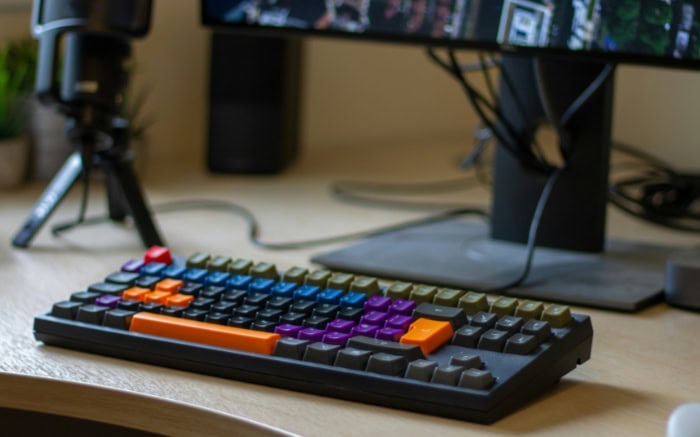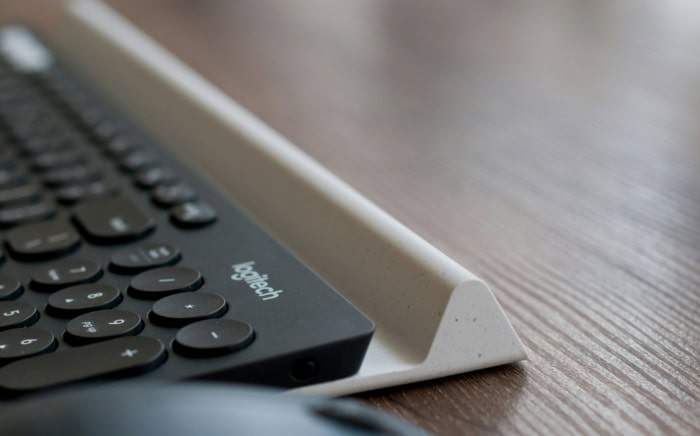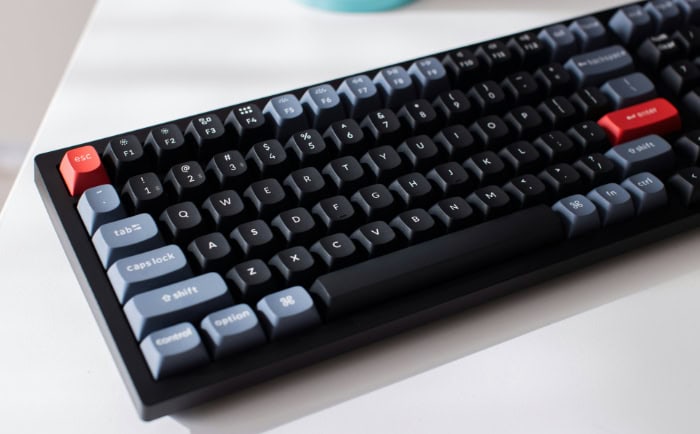Wired vs. Wireless Keyboard: Precision or Freedom?

Keyboards have become an indispensable part of our daily routines, serving as the bridge between thought and digital expression, whether it’s for gaming, typing up reports, or crafting digital art. The decision between opting for a wired or wireless keyboard is more than just about cables; it’s about tailoring your computing experience to fit your lifestyle and preferences.
The Basics of Keyboard Technology: Wired and Wireless
Choosing the right keyboard involves understanding the fundamental technologies that drive both wired and wireless options. Each type offers distinct advantages and challenges, impacting everything from compatibility to convenience.
Wired Keyboards and USB Connectivity
Wired keyboards typically connect to devices via USB ports. The type of USB connection can affect both the compatibility and performance of the keyboard.
Common USB types include USB-A, USB-C, and micro USB, each supporting different data transfer speeds and power levels. USB-C, for instance, is known for its fast data transfer rates and reversible design, making it increasingly popular in newer devices.
The primary advantage of wired connections is their reliability and simplicity, as they do not require batteries or suffer from interference.
Wireless Keyboards: Bluetooth Technology and More
Wireless keyboards operate primarily through Bluetooth or proprietary wireless connections. Bluetooth keyboards are versatile as they can connect to a wide range of devices, from computers to tablets and even some smartphones.
The main considerations for wireless keyboards are their range and battery life. Typically, a Bluetooth keyboard can maintain a connection from up to 30 feet away, though this can vary based on environmental factors and the quality of the receiver.
Battery life can range from days to months, influenced by the keyboard’s design and usage patterns.
Device Compatibility Across Platforms
Both wired and wireless keyboards need to be compatible with various operating systems and devices, including PCs, Macs, and mobile devices. Compatibility is generally determined by the keyboard’s hardware design and the software drivers available.
Most modern keyboards are designed to be plug-and-play with Windows and macOS, but connecting to mobile devices like tablets or smartphones may require Bluetooth capability or a specific app.
Hybrid Keyboards: Combining Wired and Wireless
Hybrid keyboards offer the flexibility of both wired and wireless connections. These models typically come with a detachable cable that can be used to connect the keyboard to a device via USB.
When detached, the keyboard switches to a wireless mode, usually Bluetooth. This dual-functionality allows users to choose between a stable wired connection for tasks like gaming, where latency might be an issue, and the convenience of wireless for everyday use.
Hybrid keyboards represent a growing trend in keyboard design, catering to users who value both performance and flexibility.
Performance Showdown
When it comes to choosing between a wired and wireless keyboard, performance is a critical factor that goes beyond mere preference.
Gaming
In the realm of gaming, the debate between wired and wireless keyboards often centers around input latency, consistency, and polling rates. Input latency refers to the delay between pressing a key and the action being executed on the screen.
Traditionally, wired keyboards have been favored for their minimal latency, which can be crucial in fast-paced gaming where every millisecond matters. Wireless keyboards, however, have made significant strides in reducing latency to nearly imperceptible levels, thanks to advancements in wireless technology.
Consistency is another vital aspect, as gamers require predictable performance during long gaming sessions. Wired keyboards are less susceptible to interference and thus offer more consistent input response.
Wireless keyboards, while much improved, can still be affected by environmental factors and the distance from the receiver.
Polling rate, measured in hertz (Hz), indicates how often a keyboard reports its status to the computer. Higher polling rates can lead to smoother and more responsive gameplay.
Wired keyboards typically support up to 1000Hz, offering near-instantaneous feedback. Wireless models are catching up, with some high-end options offering comparable polling rates, ensuring that competitive gamers can consider going wireless without significant compromises.
Multimedia
For those who use their keyboards for more than just typing—such as controlling multimedia playback or navigating a home theater PC (HTPC)—the choice between wired and wireless can come down to convenience and functionality. Multimedia keyboards often feature dedicated shortcut keys and volume controls, allowing users to play, pause, skip tracks, or adjust the volume without interrupting their workflow or entertainment.
Wireless keyboards shine in multimedia and HTPC setups, offering the freedom to control your entertainment system from the comfort of your couch without worrying about cable clutter. The range of wireless keyboards is sufficient for most living room setups, and the latest models boast battery lives that can handle extended binge-watching sessions.
Wired keyboards, while more restrictive in terms of movement, provide a stable and uninterrupted connection that is ideal for multimedia production environments where reliability is paramount. The absence of batteries means they’re always ready to go, and there’s no risk of losing connection at a crucial moment.
Portability and Flexibility

The debate between wired and wireless keyboards extends into considerations of portability and flexibility, impacting how and where we use our keyboards.
Wireless Advantages: Freedom and Mobility
Wireless keyboards offer unparalleled freedom, allowing for a cleaner desk setup without the hassle of cables. This advantage is not just aesthetic; it also contributes to a more flexible and efficient workspace where you can easily rearrange your setup without being tethered to a specific spot.
For gamers, the ability to play from the couch without a cumbersome cable is a significant plus, making wireless keyboards a favorite for living room PC setups. Travelers and mobile professionals benefit greatly from wireless keyboards as well, as they can be easily packed and used on the go, turning any space into a productive area.
Wired Benefits: Dependability and Constant Readiness
Despite the allure of a cable-free desk, wired keyboards have their own set of advantages, chief among them being their reliability. With a direct connection to the computer, wired keyboards suffer no signal drops or interference, ensuring that every keystroke is registered without fail.
They are always ready for use, with no need to worry about battery life or finding a power source to recharge. This makes them particularly suited for environments where constant availability and uninterrupted performance are critical, such as in competitive gaming, programming, or data entry jobs.
Desk Setups and Workspace Organization
The choice between a wired and wireless keyboard can also influence your desk setup and how you organize your workspace. Wireless keyboards allow for a minimalist setup, reducing cable clutter and giving you the flexibility to keep your workspace tidy and adaptable to your needs.
On the other hand, wired keyboards might require more thoughtful cable management but also ensure that your keyboard is always connected and ready to use. Creative solutions such as under-desk cable trays and clips can help manage wires, making a wired keyboard setup look just as clean while maintaining its reliability.
Use Cases
In real-world scenarios, the choice between wired and wireless often comes down to specific use cases. For example, a financial analyst who spends long hours inputting data might prefer a wired keyboard for its reliability and lack of need for recharging.
Conversely, a digital nomad moving from one location to another would appreciate the portability and flexibility of a wireless keyboard, enabling them to set up a mobile office with ease. Similarly, a home theater enthusiast might opt for a wireless keyboard to navigate their HTPC setup from the comfort of their sofa, while a professional eSports gamer might choose a wired keyboard for its superior performance and minimal latency.
Assessing Long-Term Value
When investing in a new keyboard, considering its long-term value is crucial. This involves not just the upfront cost but also factors like durability, maintenance, and potential replacement expenses.
Wired Keyboards: Durability and Cost Efficiency
Wired keyboards are often praised for their simplicity and durability. One significant advantage is the option to replace cables if they become worn or damaged, which is not always possible with wireless models.
This can extend the life of the keyboard significantly, especially in environments where cables are subject to frequent wear and tear. Additionally, since wired keyboards do not require batteries, users save on the cost and inconvenience of replacing batteries or charging the unit, making them generally more cost-effective over time.
Wireless Keyboards: Battery Life and Maintenance Costs
The convenience of wireless keyboards comes with considerations regarding battery life and maintenance. Modern wireless keyboards typically use either replaceable batteries or built-in rechargeable ones.
While replaceable batteries offer the convenience of quick swaps, they also involve ongoing costs and the need for proper disposal. Rechargeable batteries, on the other hand, while eco-friendlier, can degrade over time and may eventually need to be professionally replaced, which can be costly.
Additionally, the charging mechanisms in these keyboards need to be robust enough to handle frequent use, adding another layer of durability concern.
Build Quality and Failure Points
The build quality of a keyboard can greatly influence its lifespan and performance. Keyboards with high-quality materials and robust construction are less likely to encounter mechanical failures.
Common failure points in keyboards include key switches, the chassis, and connection ports. Wired keyboards typically have fewer electronic components than wireless ones, potentially reducing the likelihood of electronic failures. However, the physical cable connection can become a failure point over time.
Wireless keyboards eliminate cable issues but introduce potential failure points in their wireless transmission components and battery systems.
Total Cost of Ownership and Value Propositions
To truly assess the value of a keyboard, one must consider the total cost of ownership, which includes the purchase price, maintenance costs, potential replacement costs, and expected lifespan. Wired keyboards often have a lower total cost of ownership due to their longevity and lack of batteries.
Wireless keyboards, while typically more expensive upfront and potentially incurring additional costs for batteries or charging devices, offer significant value in terms of convenience and portability. The best choice depends on your specific needs—whether you value long-term savings and reliability or the flexibility and minimalism of a wireless setup.
Selecting the Ideal Keyboard

Choosing the right keyboard is a decision that can significantly affect your computing experience. Whether you’re a gamer, a frequent traveler, or someone who uses their keyboard for productivity at home or work, understanding the specific attributes of wired and wireless keyboards can guide you to the perfect choice.
Consider Your Intended Use
Different activities demand different features from a keyboard. For gamers, low latency and reliable connectivity are paramount to ensure that every command is registered instantly and accurately.
Those who primarily use their keyboard for typing or general use should look for comfort, such as ergonomic designs and keys that provide satisfying tactile feedback. Productivity users will benefit from keyboards with programmable keys and shortcuts that enhance workflow efficiency, and possibly multi-device compatibility for seamless switching between tasks.
If you’re often on the move, a compact, lightweight, and durable keyboard will serve you best. For living room setups, a keyboard with a good range, comfortable lap use, and integrated multimedia controls will enhance your experience.
Evaluate Your Budget
Your budget plays a crucial role in determining which keyboard you end up purchasing. High-end models often come with advanced features like superior build quality, mechanical switches, and additional customization options.
Mid-range keyboards are a good balance, offering solid performance without the premium price tag. Budget-friendly options are available too, but might lack some features or durability.
Decide how much you are willing to invest in a keyboard based on how critical these features are to your daily needs.
Assess Your Portability Needs
If you frequently move your keyboard between different locations or use it with multiple devices, portability becomes a significant factor. Wireless keyboards are generally more portable than wired ones, as they eliminate the need to manage cables.
However, consider the battery life and charging options of wireless models to ensure they can handle your mobility requirements without frequent recharges.
Reflect on Personal Preferences
Personal preferences play a substantial role in choosing a keyboard. Some users prefer the tactile feel and audible click of mechanical switches, while others might favor the quieter and softer touch of membrane keys.
Features like backlighting, macro keys, and dedicated media controls might be essential for some but unnecessary for others. Aesthetics should also be considered—find a keyboard whose look and feel inspire you to work and play.
Conclusion
Choosing the right keyboard, whether wired or wireless, is a decision that significantly impacts your daily interactions with technology. Wired keyboards are celebrated for their dependability and significantly lower latency, making them ideal for environments where performance and stability are paramount.
On the other hand, wireless keyboards offer unparalleled convenience and mobility, freeing users from the constraints of cables and allowing for a minimalist, versatile workspace. The considerations extend beyond mere functionality, touching on aspects such as budget, intended use, portability, and personal taste in design and features.
By evaluating these factors, you can select a keyboard that not only fits your technical requirements but also enhances your overall computing experience. Remember, the best keyboard for you is one that aligns seamlessly with your lifestyle and enhances your productivity and enjoyment in the digital space.



